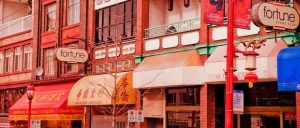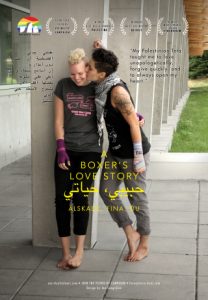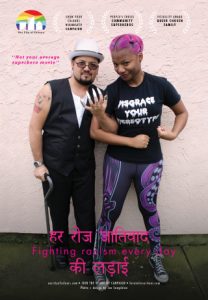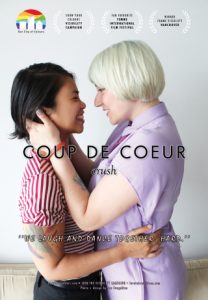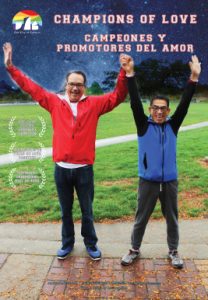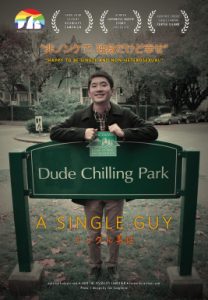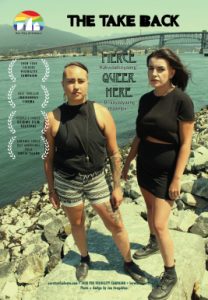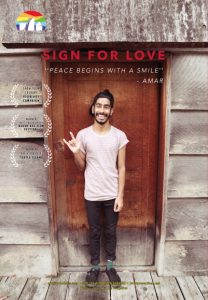Black Lives Matter Vancouver:
Cicely-Belle Blain co-founder of BLM Vancouver states that when Black Lives Matter is written about in mainstream and independent media, the point is usually completely missed (The Built Environment, 2016). This is because “‘mainstream media’ usually just means white media — as in, media written BY white people, FOR white people (The Built Environment, 2016). Rather than try to make ‘mainstream’ sound neutral, call it the ‘whitestream media. For instance, one of the mainstream media columns was are informed by a racist climate of white supremacy that requires black communities and black activism to be constructed as dangerous and disruptive (The Built Environment, 2016). Another depicted the organization as disruptive by questioning if, it was only Black lives that mattered. It further states that “Black Lives Matter” is a phrase that almost always fuels controversy and a wide range of heated reactions (The Built Environment, 2016). This is a reminder that the media is controlled by whiteness and therefore like its audience, it expresses white fragility. As a result, although racism is central the Black lives, this is not considered a factor, since everything is viewed through colour-blind racism (The Built Environment, 2016).
Blain opposes the co-optation of black experiences by white media-makers/writers and shares the specific strategies that they and the BLMV team have used in resistance (The Built Environment, 2016). This involves delving into historical research, to sharing Instagram memes, to building visible community presence through photography/video, to learning from the institutional experiences of academics of colour at the University of British Columbia (The Built Environment, 2016).
In addition, the movement deconstructs documentaries, like “Do Not Resist”, winner of best documentary of the 2016 Tribeca Film Festival (The Built Environment, 2016). This film is a depiction of the militarization of the local police departments since 9/11 (The Built Environment, 2016). As it relates to Vancouver, this medium signify the policing, suppression and dismantling of Black voices like those of Hogan’s Alley. Similarly it is an illustration of the many in which law enforcement police and control Aboriginal bodies, particularly in marginalized zones such as the Downtown Eastside. As well as the surveillance of brown bodies who occupy the space of the stranger, threat, and by extension (The Built Environment, 2016) the monstrous, Muslim terrorist (Puar & Rai, 2002).
Black Lives Matter Toronto:
Janaya Khan, one of the co-founders of Black Lives Matter Toronto states that the Canadian police, media, and society at large are inundated with anti-black racism. In addition, the movement is perceived by the media as a social, systemic, structural power because it challenges the homonormativity of the white queer community and mainstream Canada (Maclean’s, 2016). Both the Vancouver and Toronto chapters of Black Lives Matter opposed police presence in Pride parades with regards to racialized police brutality, but white Queer people benefit from police presence and inclusion in Pride parades because it assists in achieving homonormativity (Agathangelou et al., 2008). The “good” white Queer citizen can gain institutional acceptance by distancing themselves from and erasing Queer people of colour, posing as citizens on the same side of privileged white heterosexual people, emphasising the benefits of their whiteness and denouncing the detriments of their Queerness (Agathangelou et al., 2008). Because Queer activism is mobilized through homonormativity, Pride parades are restricted in what type of activism, and what type of Queer people, can be used in demonstrations. Thus, “freedom depends on the (re)founding of unfreedoms” (Agathangelou et al., 2008, 131). While Pride parades are designed to challenge heteronormativity, in practice, they actually normalise homonormativity, which then leads to homonationalism (Puar, 2007, in Greensmith & Giwa, 2013).
Extending upon homonationalistic discourse, many Queer activisms have a goal of obtaining social rights and acceptances through assimilation into current social structures, which leaves behind more vulnerable group members, such as Queer people of colour (Cohen, 1997). Similarly, immigrated citizens are forced to assume a lifestyle that benefits the market and values of economy (Ferguson, 2003). Who is deserving of inclusion and acceptance is dependent on the enhanced or subdued ability of citizens to assimilate in and adapt to cultural norms, which Aihwa Ong (1999) called “variegated citizenship” (in Chávez, 2010, p. 138). Therefore, both Queer people and migrant people challenge and threaten “family values” and the familial status quo, and they are often cited as the source of a multitude of social problems, such as the marriage crisis (Chávez, 2010).
Furthermore, when queerness becomes inherently radical and taken up my white discourses of oppression, queer people are imagined as white, and Black/other people of colour are imagined as homophobic and backwards due to their race/religion, banishing queer people of colour from mainstream queer activism (Bacchetta, El-Tayeb & Haritaworn, 2015; Haritaworn, Tauqir, & Erdem, 2008). Additionally, these imaginations can perpetuate the “dual process of incorporation and quarantining” (Puar & Rai, 2002), which also erases people of colour from Queer activism. Rather than focusing on the binary of heterosexual/Queer, Queer activism should pay attention to the varying identities within the Queer community, regarding race, class, and gender (Cohen, 1997). Consequently, the Pride parade as a form of queer activism serves to promote the social visibility of Queer people through occupying space, and a person’s representation in a Pride parade relies on “commercialism and commodification of identities,” (Enguix, 2009, p. 24). Sonia E. Alvarez (1997) writes about the “NGOinization” of social movements (including Pride), which describes how these movements rely on corporate funding for mobilization (in Agathangelou et al., 2008). In this way, social movements backed by socially marginalized groups are forced to coincide with global capitalist relations to eliminate their own social marginalization. Pride parades emphasise consumption and, as a result, racialized Queer people and Queer people of low socioeconomic status are underrepresented (for example, because they cannot afford elaborate costumes, cannot take time off from work to participate, or because they cannot/refuse to support capitalism; Greensmith & Giwa, 2013). With regards to the BLM movement being viewed as social, systematic, structural power, this is due to the fact there is the perception that it bullied Pride and it hijacked the parade. This is unfortunate because the entity consists of a group of marginalized individuals whose mandate is to defend disenfranchised groups against the police and racism. Additionally the use of languages such as “bullies” and “hijackers” regarding the organisation, by multiple mainstream media is problematic and dangerous. This is bearing in mind that Blacks already live in cultural and institutional racism. Additionally, whites who opposes the authorities are not associated with such languages. Therefore the media is displaying anti-black practices (The Globe and Mail, 2016).
In another aspect, blackness as deviating from normality relates to the grand discourse of anti-Black racism through representation within media as spoken about by Khan of Black Lives Matter. Khan documents the fact that between 2005 and 2015 the federal black inmate population grew by 69% (Maclean’s, 2016). This is the fastest growth rate of any group including Aboriginals. What is more startling is that the Black populations makes up 2.9% of the population yet there is a 10% inmate representation in the federal prison (Maclean’s, 2016). Some these “inmates” are immigrants who arrive in Canada to visit their family member but they do not fit nation-state’s definition of a moral and good citizen. And therefore begs the question who is allowed to enter the border of the state and who belongs. As a result they are detained in jail awaiting a decision by the courts. It is for this reason that the organization speaks for Blacks and Aboriginal because their issues are intrinsically linked (Maclean’s, 2016). For example, on April 2016 First Nations communities “occupied the offices of Canada’s Indigenous Affairs Department to demand action over suicides as well as water and housing crises in their communities” (Democracy Now, 2016). These series of protests took place days after “the Cree community of Attawapiskat declared a state of emergency over attempted suicides” (Democracy Now, 2016). These protests were not constrained to one region in Canada, but were “set-up occupations inside and outside the offices of Indigenous and Northern Affairs Canada in Toronto, Regina, Winnipeg and Gatineau, Quebec” (Democracy Now, 2016). Black Lives Matter activists stood in solidarity with Indigenous protectors, after just weeks earlier launching their “15-day encampment outside police headquarters following news there would be no criminal charges for the police officer who fatally shot a South Sudanese refugee named Andrew Loku” that last July (Democracy Now, 2016). First Nations activists also showed up in solidarity, standing alongside BLM and their allies, in the same place Indigenous activists show up each year to protest the state and police complicity within the devastating issues surrounding the systematic ignoring of missing and murdered Indigenous women and girls (Democracy Now, 2016). To comprehend the relevance of Indigeneity and Indigenous resistant and sovereignty within the BLM movement, there must be an understanding that BLM organizes with the comprehension that they do so on stolen and often unceded Native lands. In addition, the police brutality and state sanctioned violence which targets Black/ Muslim and non-Muslim bodies, stems from the same institutions which developed policing as a way to guard the colonial state (Democracy Now, 2016). This form of colonial-stemmed policing ensured that Indigenous folks did not leave the locales of reserves and that the settlers would be so-called “protected” from the savage Others (Democracy Now, 2016). The struggle of deportation, Islamophobia, badge accompanied gun violence which hovers over Black trans, queer and cis bodies is parallel to the state sanctioned horrors faced by Indigenous folks who are attacked by swat police when protecting their waters/ lands from pipelines and corporations, and the passing off of murdered and missing loved ones. Black and Indigenous struggles therefore are intrinsically interlocked, making this relationship the core of the BLM’s politics of resistance and struggle on stolen lands.
Work Cited:
Agathangelou, A. M., Bassichis, M. D., & Spira, T. L. (2008). Intimate investments: Homonormativity, global lockdown, and the seductions of empire. Radical History Review, 100, 120-43.
Alvarez, S. E. (1997). Latin American feminisms ‘go global’: Trends of the 1990s and challenges for the new millennium. Cultures of Politics/Politics of Cultures: Revisioning Latin American Social Movements. S. E. Alvarez, E. Dagnino, & A. Escobar (Eds.). Boulder: Westview.
Bacchetta, P., El-Tayeb, F. & Haritaworn, J. (2015). Queer of colour formations and translocal spaces in Europe. Environment and Planning D: Society and Space, 33(5), 769-78.
Chávez, K. R. (2010). Border (in)securities: Normative and differential belonging in LGBTQ and immigrant rights discourse. Communication and Critical/Cultural Studies, 7(2), 136-155.
Cohen, C. J. (1997). Punks, bulldaggers, and welfare queens: The radical potential of Queer politics? Journal of Lesbian and Gay Studies, 3, 437-65.
Democracy Now.(n.d.). Occupied Canada: Indigenous & Black Lives Matter Activists Unite to Protest Violence & Neglect. Retrieved November 25, 2017, from https://www.democracynow.org/2016/5/20/occupied_canada_indigenous_black_lives_matter
Enguix, B. (2009). Identities, sexualities, and commemorations: Pride parades, public space and sexual dissidence. Anthropological Notebooks, 15(2), 15-33.
Ferguson, R. A. (2003). Introduction: Queer of colour critique, historical materialism, and canonical sociology. In Aberrations in Black: Toward a Queer of Colour Critique. Minneapolis: University of Minnesota Press.
Greensmith, C. & Giwa, S. (2013). Challenging settler colonialism in contemporary Queer politics: Settler homonationalism, Pride Toronto, and Two-Spirit subjectivities. American Indian Culture and Research Journal, 37(2), 129-48.
Haritaworn, J., Tauqir, T., & Erdem, E. (2008). Gay imperialism: Gender and sexuality discourse in the ‘war on terror’. In Out of Place: Interrogating Silences in Queerness/racialiality. A. Kuntsman & E. Miyake (Eds.). York: Raw Nerves Books.
Ong, A. (1999). Flexible Citizenship: The Cultural Logics of Transnationality. Durham, NC: Duke University Press.
Puar, J. K. (2007). Terrorist assemblages: Homonationalism in Queer times. I. Grewal, C. Kaplan, & R. Wiegman (Eds.). Durham, NC: Duke University Press.
Puar, J. K. & Rai, A. (2002). Monster, terrorist, fag: The war on terrorism and the production of docile patriots. Social Text, 72(20), 117-48.
Schwartz, Z. (2017, July 06). How Black Lives Matter co-founder Janaya Khan sees Canada. Retrieved November 25, 2017, from http://www.macleans.ca/news/canada/how-black-lives-matter-co-founder-janaya-khan-sees-canada/
The Built Environment. (n.d.). TALKING BACK: How whitestream media f*cks up when talking about Black Lives Matter. Retrieved November 25, 2017, from http://www.mediacoop.ca/audio/talking-back-how-whitestream-media-fcks-when-talki/36096


